The verdict: The 2016 Jeep Wrangler Rubicon remains the best worst new car you can buy — loud, unpleasant, inefficient, uncomfortable and expensive, but able to scale tall mountains in a single bound and look ridiculously cool while doing it.
Versus the competition: Nothing on the market combines the Wrangler's iconic style and reputation with its go-anywhere abilities, open-air fun and legions of fanatically loyal owners — which is why Jeep charges whatever it wants for the Wrangler.
Editor's note: This review for the 2016 Jeep Wrangler Unlimited Rubicon Hard Rock was written in December 2016. For 2017, Jeep has added a new trim level above the Rubicon, the Rubicon Recon Limited Edition, with beefier axle and differential components, plus new graphics inside and out. To see what's new for 2017, click here, or click here to compare the two model years.
There's really nothing quite like a Jeep Wrangler. That's not an exaggerated claim, either; it's the only body-on-frame SUV on the market with two live axles and doors that not only come off, they're easily removable. We're about to see an all-new Wrangler introduced for 2018, so we figured one last hurrah in the outgoing model was warranted.
We drove the top-of-the-line 2016 Wrangler Unlimited Rubicon Hard Rock. Loaded with every conceivable piece of off-road equipment on the options list, it is utterly unlike anything on the market. But while its off-road abilities are well-established, what is it like to live with every day? Lots of people buy a Wrangler for its looks and image alone, but does it make a decent daily driver?
Exterior & Styling
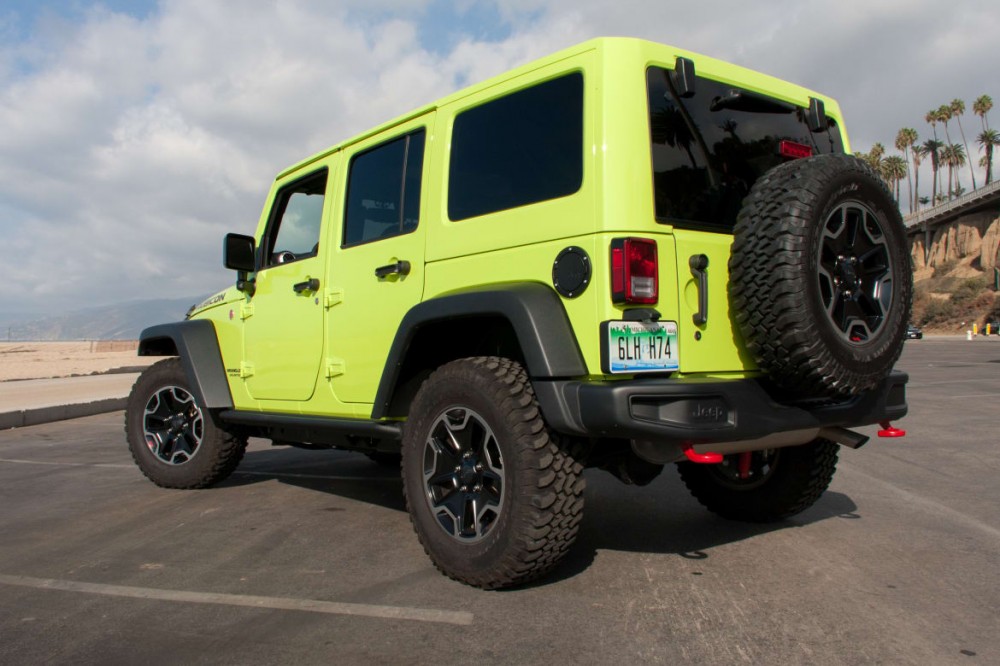
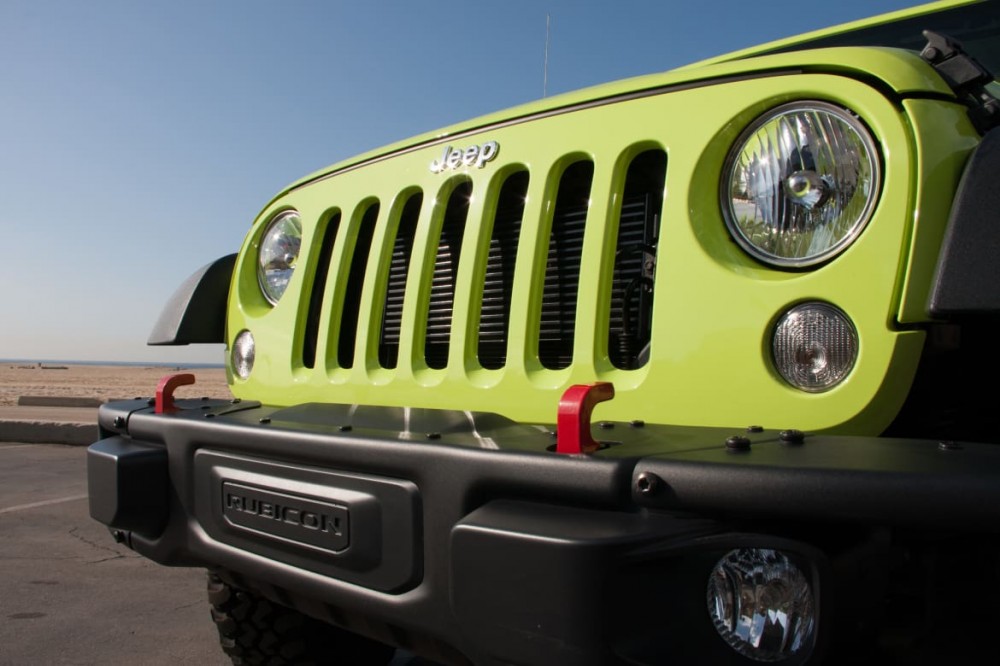
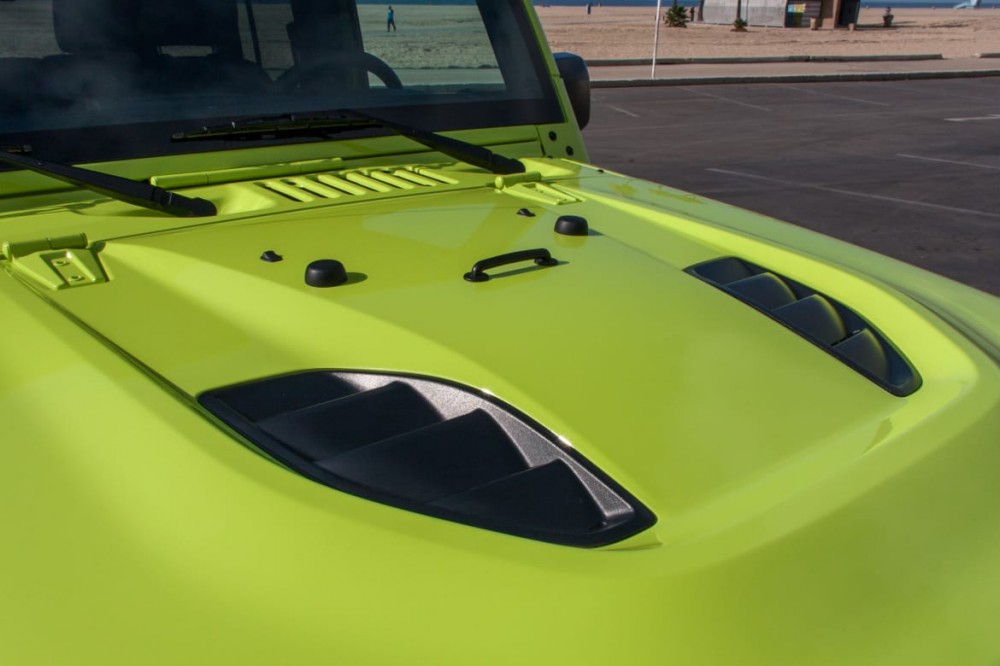
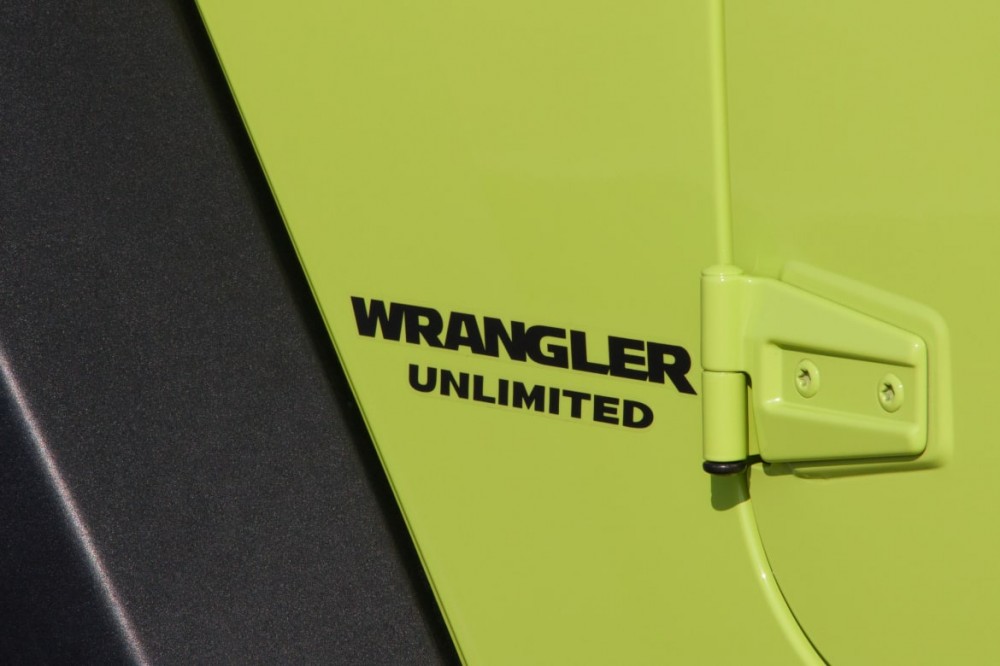
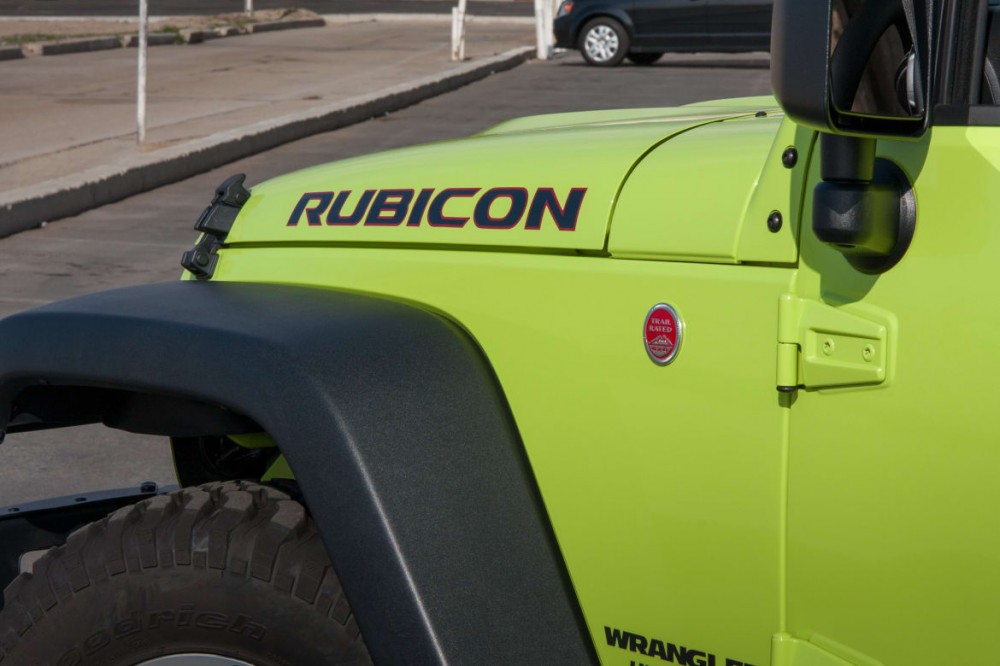
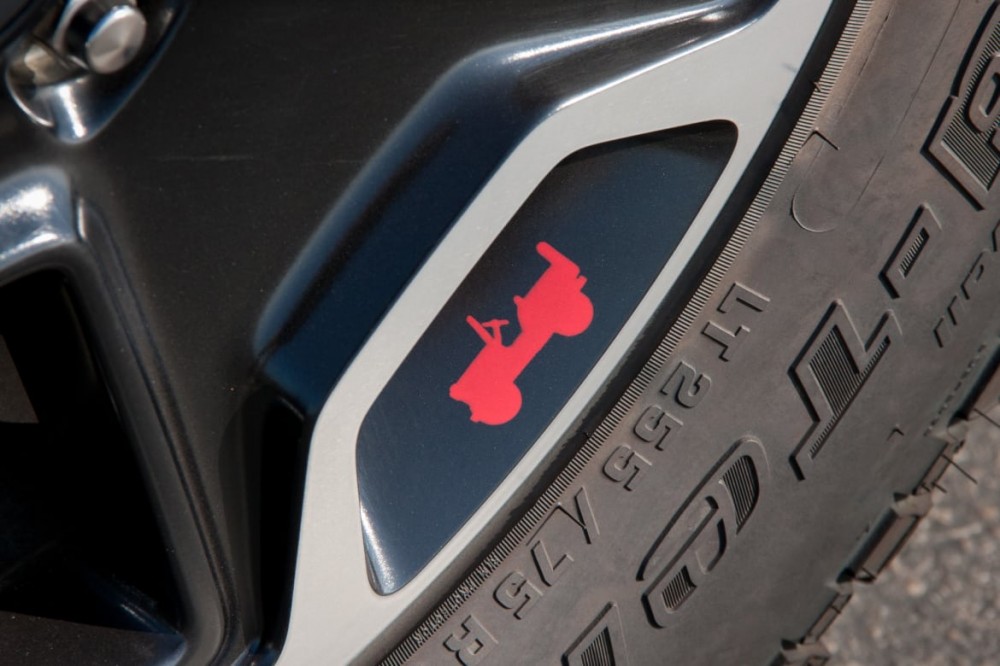
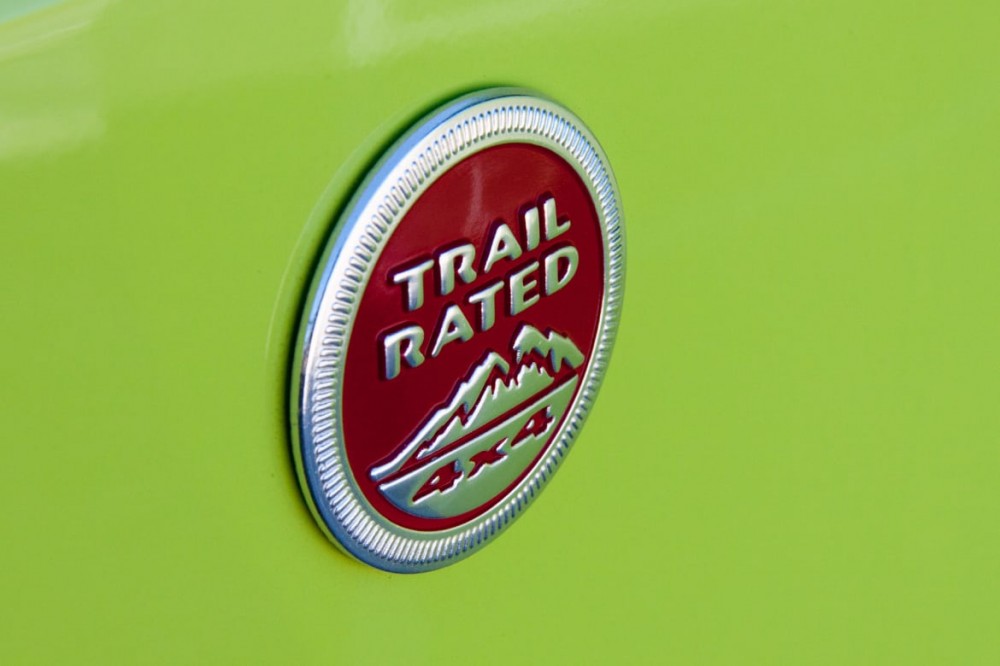
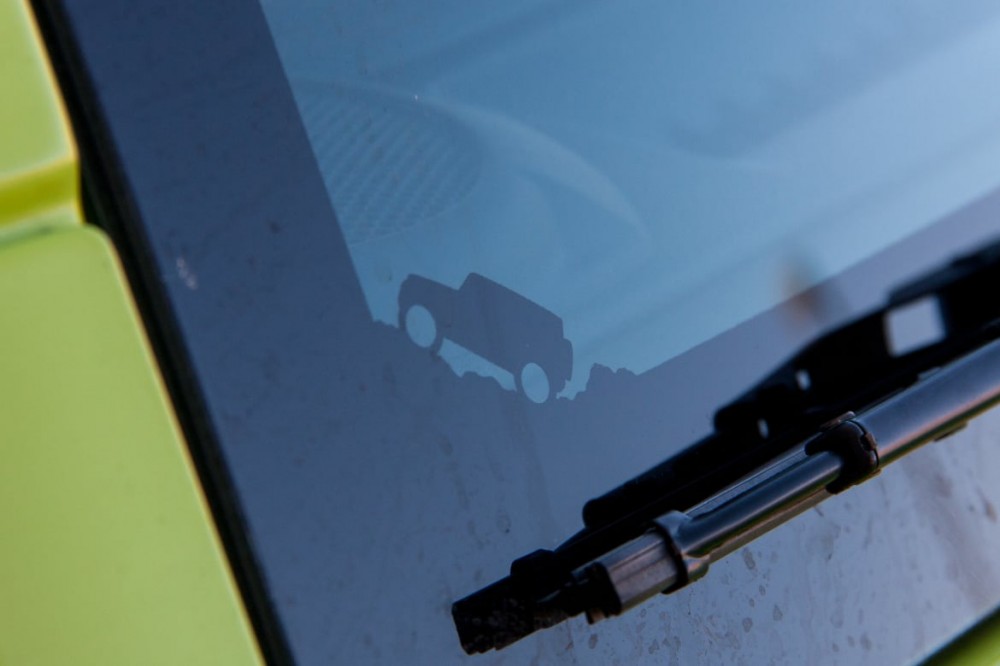
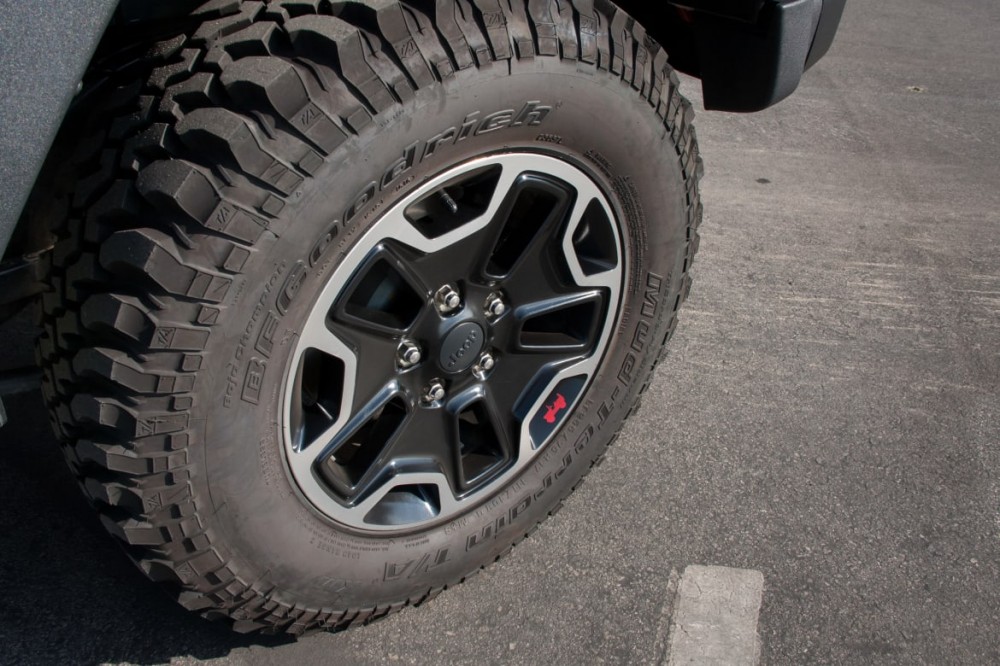
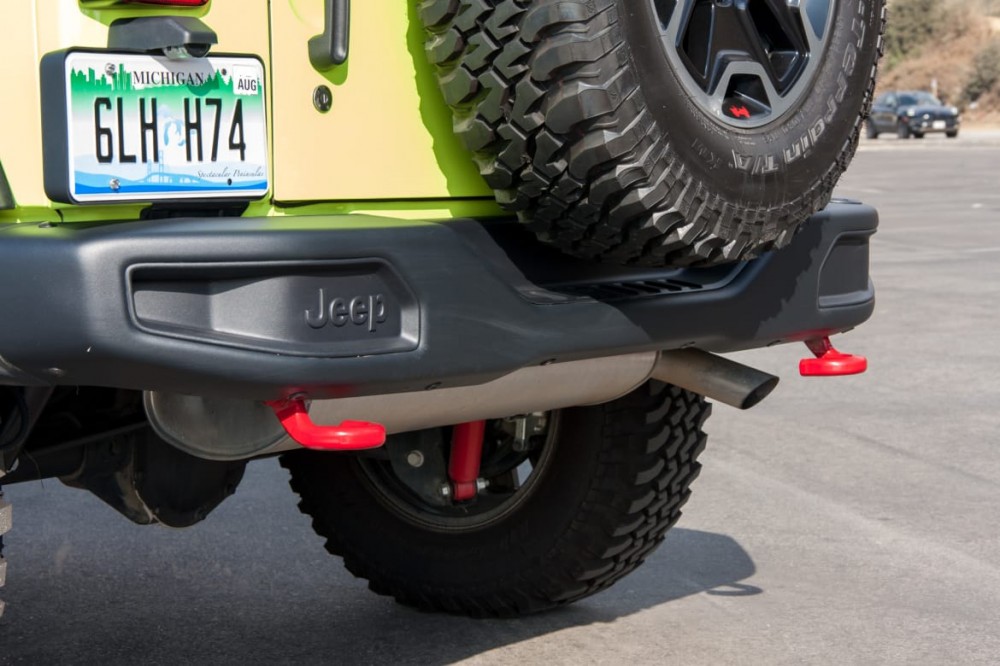
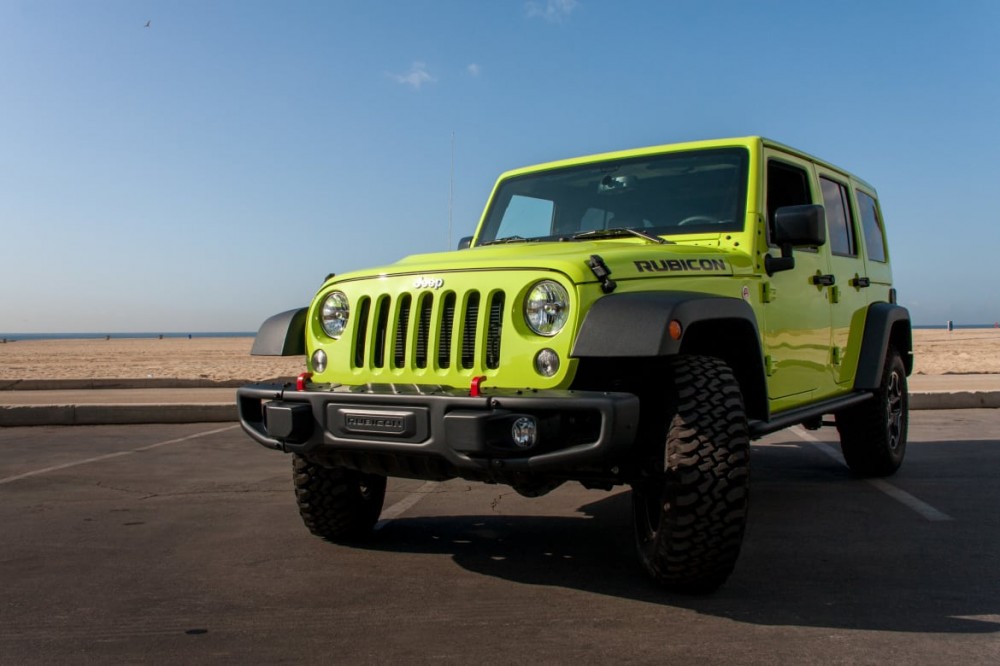
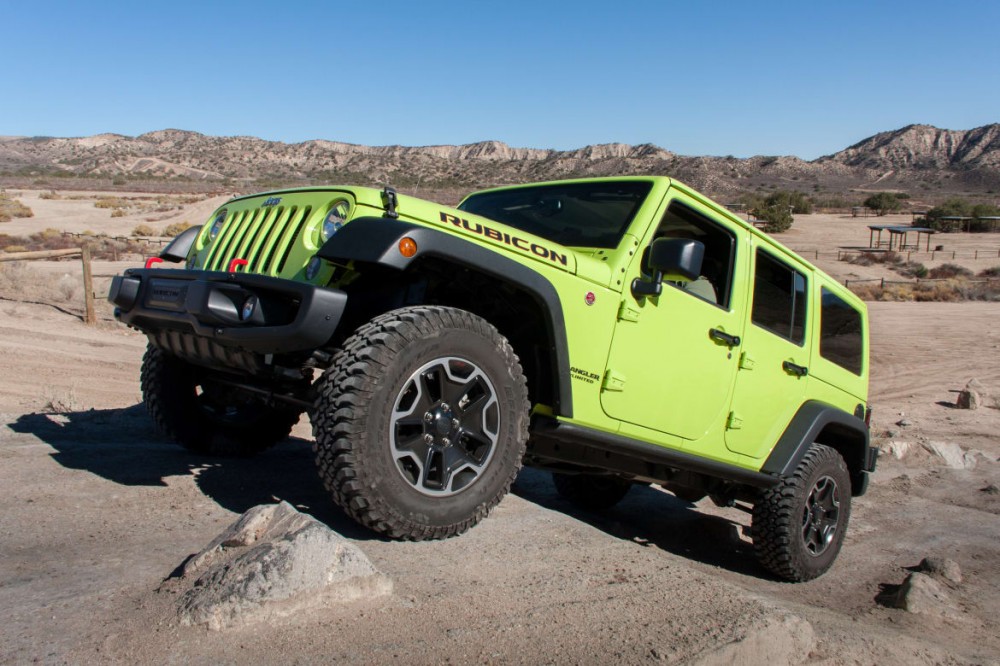
The Wrangler looks as the Wrangler has for decades. Take a look at an original 1941 Willys and you can immediately see the lineage. It's a shape and design philosophy as old and revered as the Porsche 911, Volkswagen Beetle or Ford Mustang. While it has varied some over the years (including a brief stint with square headlights in the 1980s), the chunky, blocky, purposeful styling has stayed much the same.
So has the body's functionality. All four doors are completely removable via just two bolts and a fabric door-check strap. The hardtop comes off with a few more bolts and a friend to help you lift it. If you want only a little bit of sun, the Freedom Top front panels can be removed separately, or you can opt for the finicky manual soft-top for alfresco motoring whenever the mood strikes. It's not the easiest soft-top to put up and down, requiring the removal of side panels and the rear window, but owners put up with such hassles in exchange for an open-air sensation like no other.
The Hard Rock package adds some visual flair, too, with a custom leather interior and special hood, bumpers, wheels, badges and some top content as well, like an Alpine premium audio system and heated front seats.
Perhaps the best aspect of the Wrangler's styling: If you don't like it, you can change it. Myriad aftermarket companies offer everything from fenders to bumpers to auxiliary lights. All it takes is money.
How It Drives
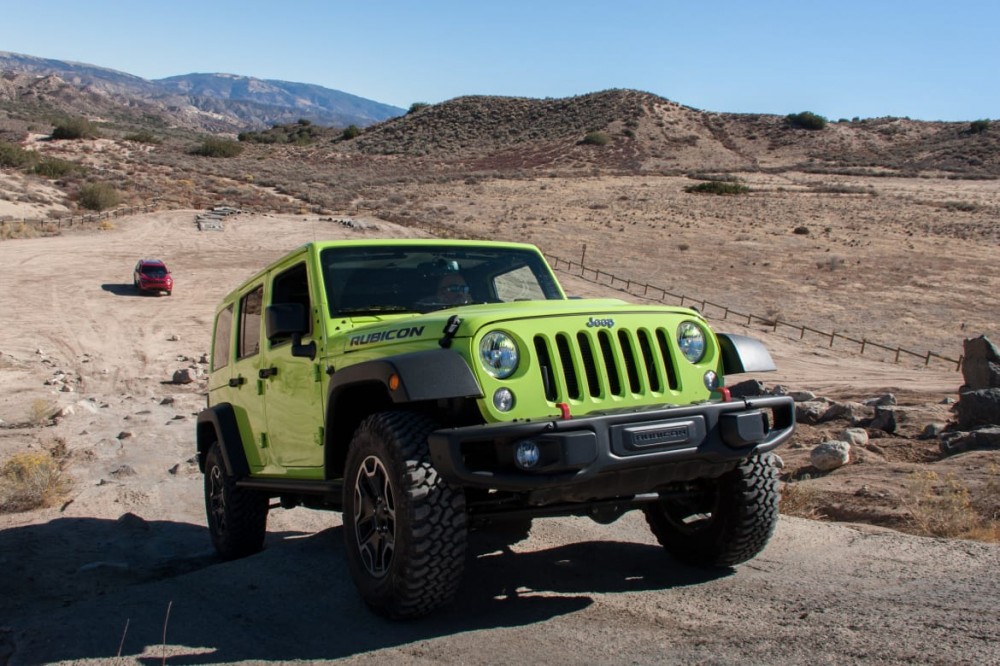
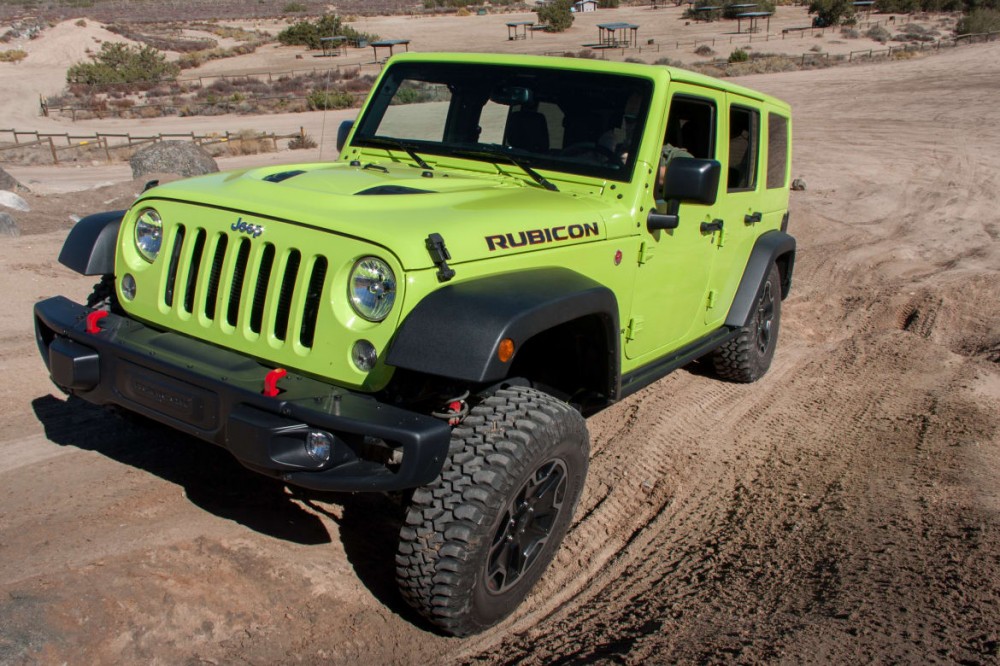
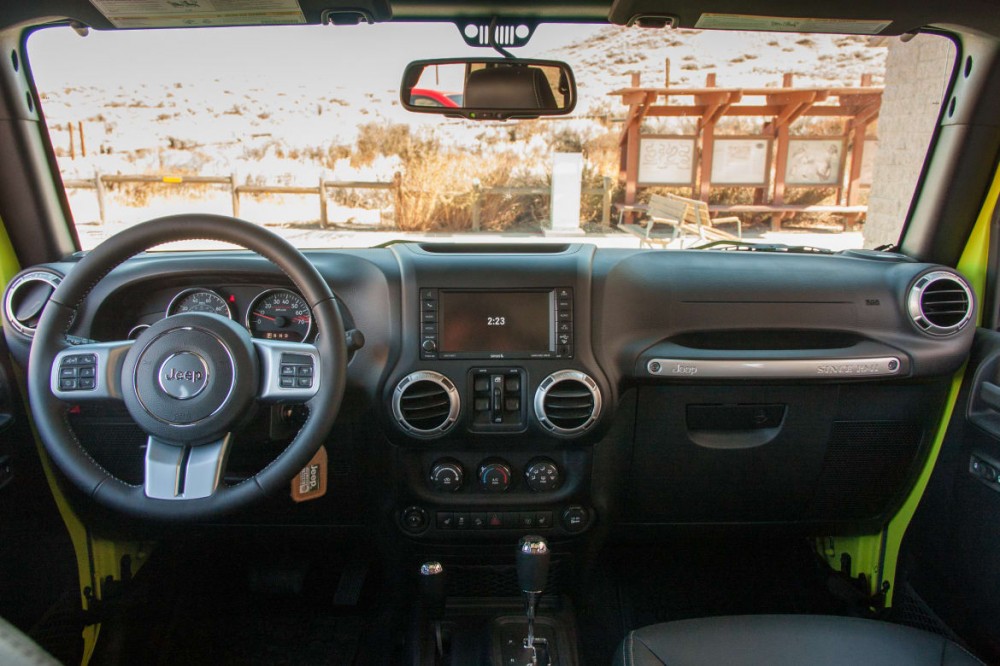
The Wrangler Unlimited Rubicon does only two things well, but it does those things supremely well: go off-road through extremely rough terrain and look incredibly cool just about anywhere it pulls up.
Judging how the Wrangler Unlimited drives depends entirely on where you're driving it. Take it to your local off-road park, through the California desert, over towering coastal sand dunes or through a forest full of mud holes and two-track ravines, and it's brilliant.
The list of parts that help the Wrangler go anywhere unpaved is long: There's part-time four-wheel drive with a 4:1 creeper gear; a 4.10 final drive ratio; electronically lockable front and rear differentials on heavy-duty Dana 44 solid axles; beefy off-road shocks and springs; skid plates protecting various underbody components; electronically disconnecting front sway bar links; super-chunky BFGoodrich M/T Mud-Terrain tires; and 10.5 inches of ground clearance. It soldiers along broken, boulder-strewn, rutted dirt hard-pack trails like a champ, soaking up terrain that would set your teeth rattling and kidneys bruising in just about any other vehicle. It's made to be off-road, and that's where it excels like no other.
Get back on the street, however, and you'll be singing an altogether different tune. The engine — a 285-horsepower, 3.6-liter V-6 — is the only one offered, mated to either a standard six-speed manual transmission or an optional five-speed automatic. Many enthusiasts get excited when they see that a manual is still available, but they shouldn't be; it's awful, with a rubbery feel and a shift lever so long you'll feel like you're shifting an oar. The automatic works much better for everyday driving on- or off-road, but you'd never call the Wrangler quick. It's geared for off-road torque, not brisk acceleration or highway cruising comfort.
On the street it's poky and ponderous, and the Rubicon suspension that was so amazing in the rough is soft and marshmallowy on tarmac. Accelerate, and the truck squats on the back wheels thanks to the soft off-road shocks. Hit the brakes, and the nose dips noticeably. Crosswinds are a nightmare on the highway (or even around town) because of the Wrangler's slab sides and tall off-road tires. The soft brakes don't work with any sense of immediacy, either. Simply put, the Wrangler makes an awful daily driver, family vehicle or first-time ride for a teenage driver.
The Wrangler's one true saving grace, however, is enough for hundreds of thousands of buyers every year to overlook all that: You can take the top and doors completely off, immediately turning your car into an open-air beach buggy that provides a sense of freedom unlike anything short of a motorcycle.
Fuel economy is terrible, but that's not unexpected given the Wrangler has all the aerodynamic efficiency of a single-family bungalow. The automatic-equipped Wrangler is EPA-rated 16/20/18 mpg city/highway/combined. That figure gets 1 mpg better on the highway in the manual version thanks to its extra gear. My 260 miles of mixed driving netted 18.9 mpg combined, so I'd say the ratings are pretty much spot-on. Of course, if you take the top and doors off, what little aerodynamic efficiency the Wrangler has goes right out the window and you might see your mileage drop — but then, the Jeep will be lighter, so maybe it's a wash.
Interior
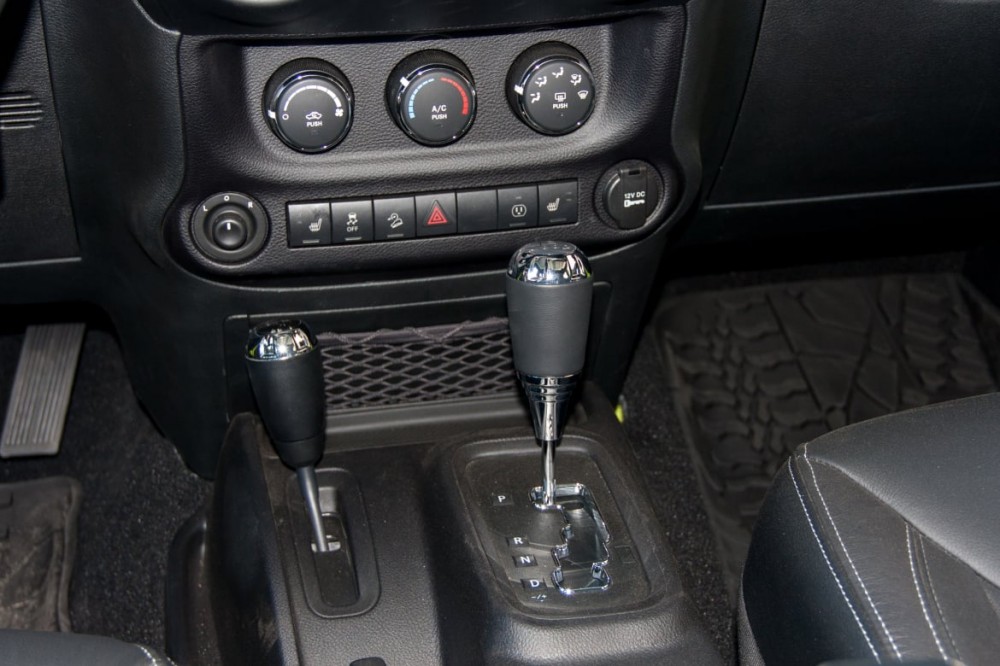
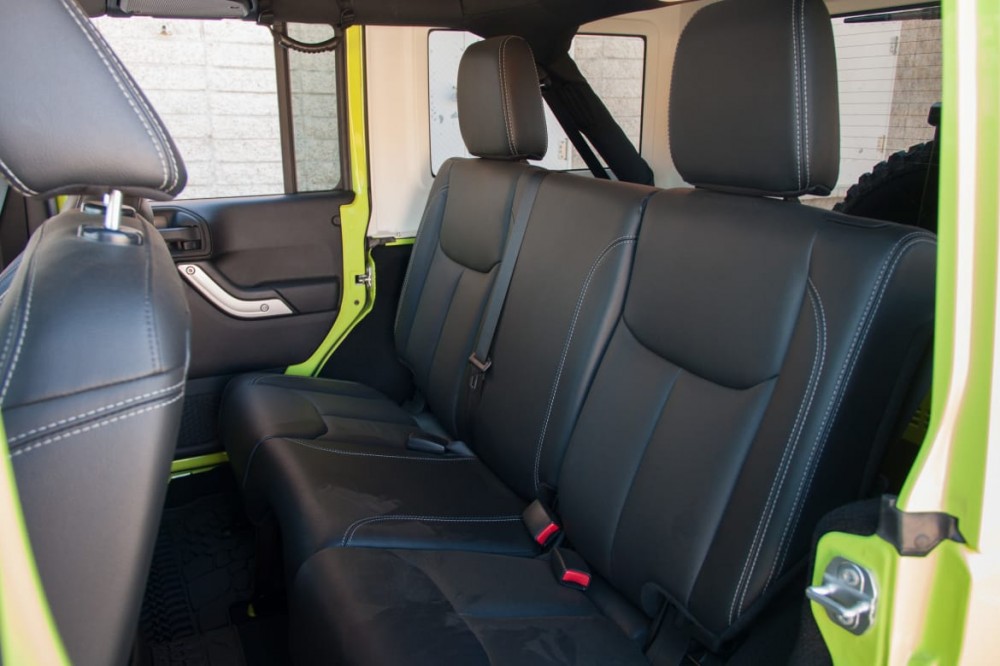
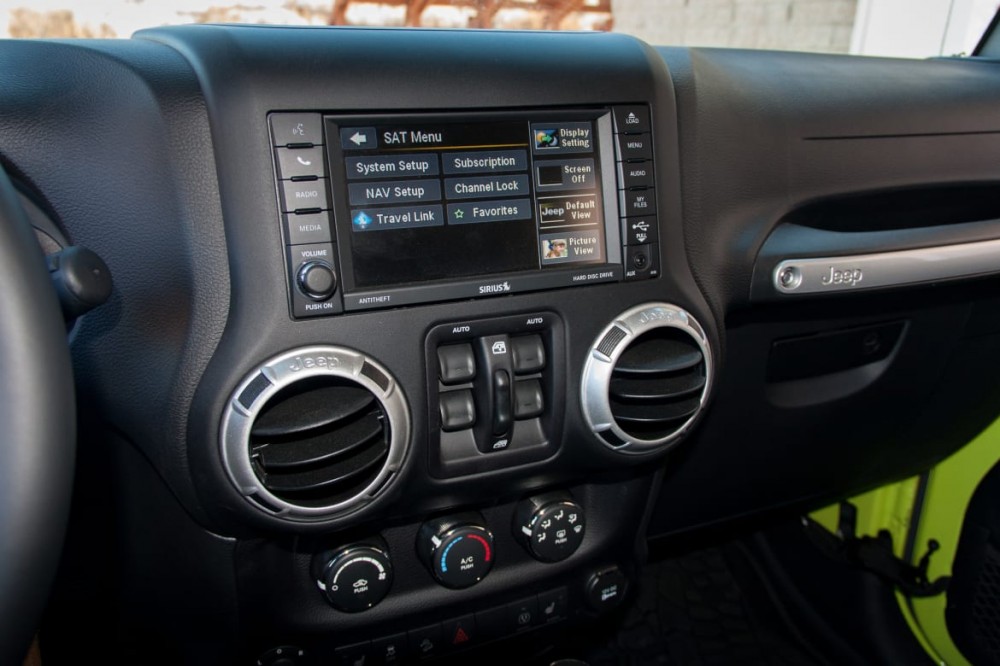
It's a climb up into the Wrangler Unlimited Rubicon's cabin thanks to its 10.5-inch ground clearance and big tires. Once you're there, it's throwback time. The last time the Wrangler got an interior update was in 2011, when it received a curvier, more carlike dashboard, as opposed to the blockier, cheaper one that preceded it. Nothing has changed in the intervening six years, with the switches, controls and materials still reminiscent of Chrysler's freshly post-bankruptcy days.
The front seats are decently comfortable but not terribly big or very adjustable by modern standards. The backseat can fit three people in a pinch, but it's low to the floor, putting passengers in a knees-up position and not giving them much in the way of legroom.
The beauty of this interior is its customizability. Don't like the silver trim color? You can replace it with a Mopar colored trim kit, paint the removable bits yourself or go to any number of aftermarket parts sites for all kinds of embellishments. There are seat covers in just about any color you can imagine and varieties of fabrics — there's even colored leather replacement upholstery. There are dozens of aftermarket tops, replacement tube doors and custom holders for all kinds of accessories, from fire extinguishers to flashlights to coolers. The resources available to make a Wrangler your own are immense, limited only by your imagination and wallet. The only real problem is that the inexpensive standard interior in my test car came in a vehicle costing nearly $50,000. For that much money, it should be decidedly better than it is.
Ergonomics & Electronics
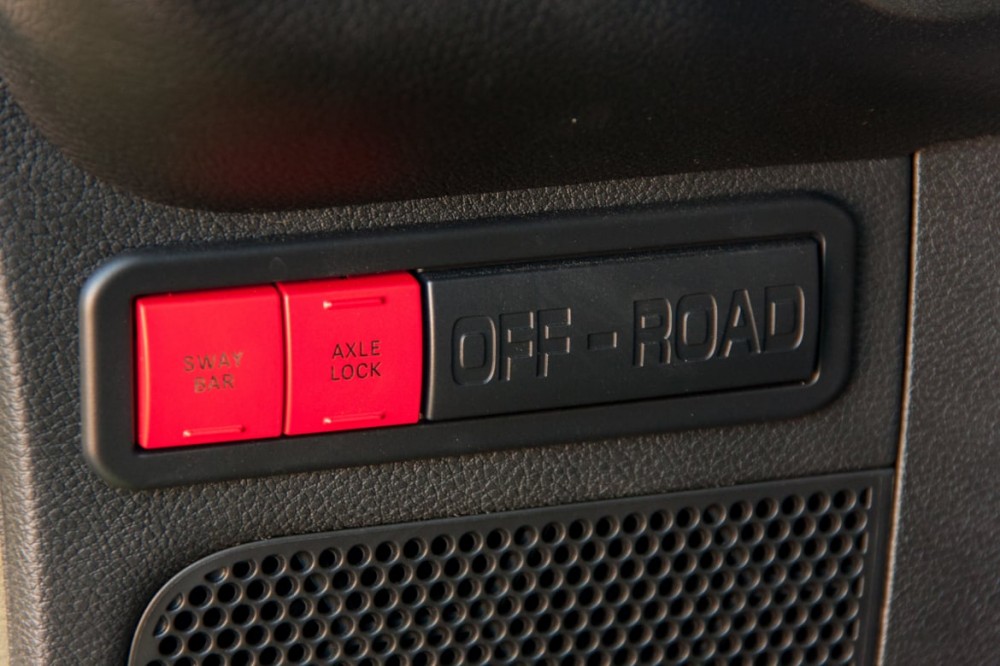

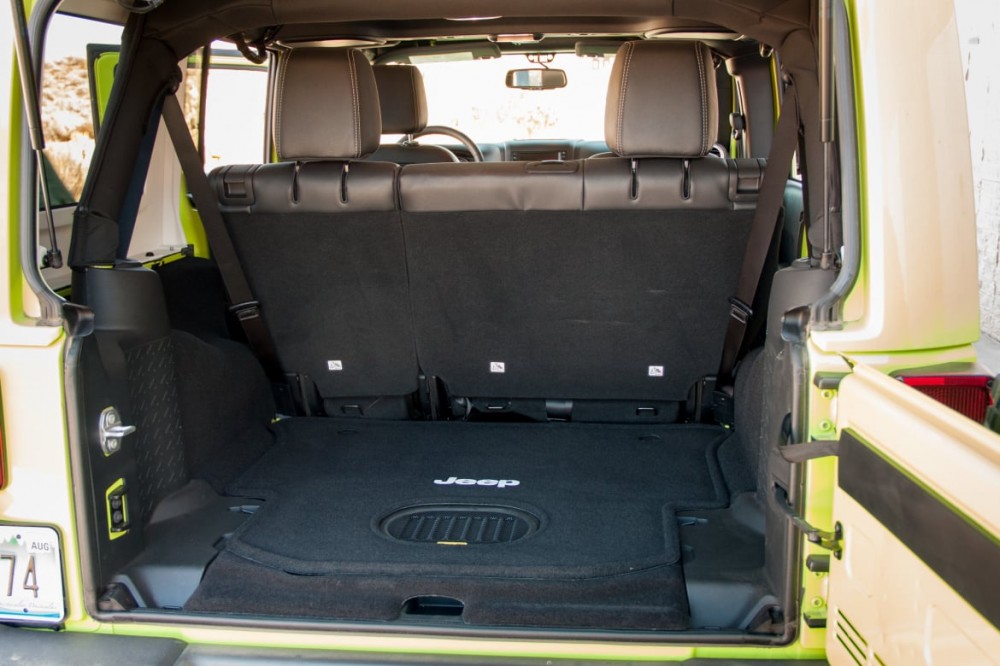
The Wrangler's gauges are small, but they're easy to read and don't overload the driver with all kinds of information. In many ways, the Wrangler's vintage nature carries through to its electronics — there isn't much in the way of fancy technology in here, as you wouldn't really want much in an interior that's meant to get wet. The Wrangler's controls are simple and easy to use, with switches that are easy to find, including those that activate the locking axles and sway-bar disconnect.
The multimedia system itself is positively ancient by Chrysler's own standards — now that the old minivans have been retired in favor of the new Pacifica, the Wrangler remains the only vehicle in the Fiat Chrysler Automobiles stable that features this style multimedia system, which dates back to the previous decade. Yet while it isn't the latest Uconnect system, there's something to be said for its dead-nuts simple operation and design. It's not flashy, but for audio and multimedia files, it works quite well.
The optional Alpine premium audio system is a must-have. It's designed specifically for the Wrangler's horrible acoustics and speaker placement, and its more robust speakers, dedicated amp and floor-mounted rear subwoofer make a huge difference. If you opt for the regular stereo, you won't be able to hear it if you remove the top and doors. The Alpine system knows when you've got the top down and adjusts output accordingly.
Cargo & Storage
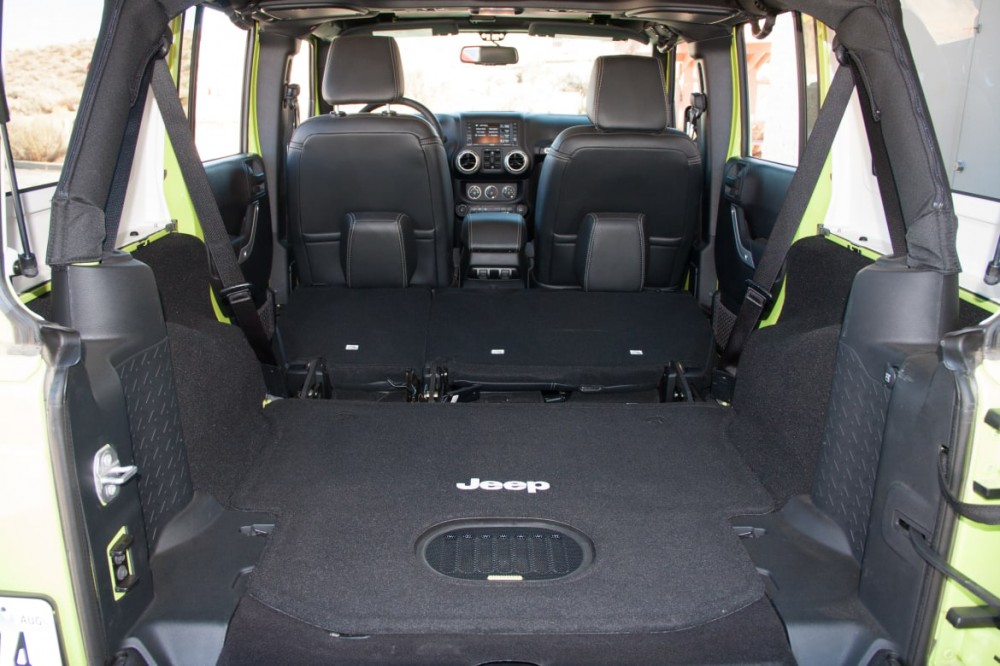
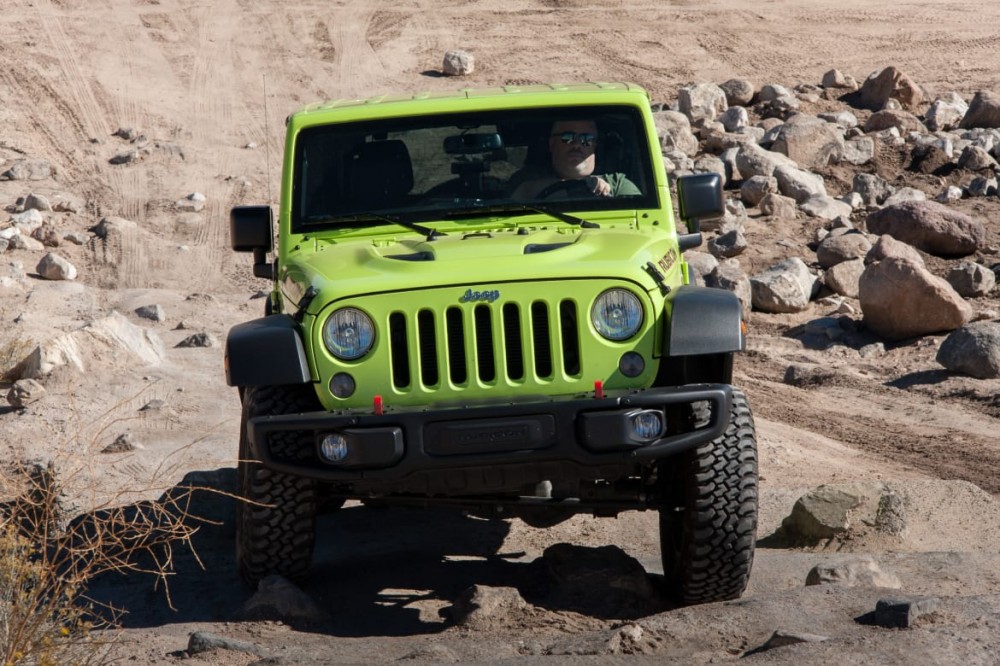
The Wrangler Unlimited features 31.5 cubic feet of cargo room behind the rear seats, which fold flat to open up a cavernous 70.6 cubic feet of total cargo room. If you opt for a two-door Wrangler you don't get nearly as much space. That model features a two-passenger bench in the back that folds forward but not much out of the way. It is removable, however, allowing for 55 cubic feet of total cargo room, but then you'll have reduced your Wrangler to a two-seater.
Safety
The 2016 Wrangler Unlimited has not been rated by the National Highway Traffic Safety Administration in any crash test except a rollover, where it scored three out of five stars, making it one of the last few passenger vehicles on the market rated below four stars. Test results from the Insurance Institute for Highway Safety are decidedly mixed: The Wrangler four-door scored good (out of a possible good, acceptable, fair and poor) for small and moderate overlap front tests, but only marginal for side-impact and head restraint tests. There are no crash avoidance technologies available on the Wrangler — like forward collision warning or autonomous braking — or even parking sensors, blind spot monitors or a backup camera.
To top it all off, the Wrangler's headlights are abysmal. The incandescent bulbs cast a tragically weak beam and are rated poor by IIHS. Optional LED headlights are available for 2017, but the standard headlights are truly terrible (and one of the first things most new owners swap out for aftermarket units upon purchase).
Value in Its Class
The Wrangler is an expensive vehicle, especially considering the level of technology and refinement you get. Even base models cost more than you might expect, but they do have one benefit: They hold their resale value better than nearly any other vehicle on the market. Still, a basic 2016 Wrangler Unlimited Sport starts at $28,690 including destination fee, and it goes up from there. There are often special editions each year and always a unique color or two. The price for my tester, a top-trim Rubicon with the Hard Rock package, began at $37,990 but ended up at an eye-watering $48,120 — and there were still options to be had.
All competitors have fallen by the wayside over the years as safety regulations and fuel economy requirements have taken all the true off-roaders, well, off the road in the U.S. The Ford Bronco, Nissan Xterra, Toyota FJ Cruiser, Hummer H3, Suzuki Samurai and even the Land Rover Defender have all come to an end while the Wrangler soldiers on.
There are still a few competitors that might be comparable, one of which comes from Jeep itself. The Grand Cherokee Trailhawk has many of the same abilities as the Wrangler but is wrapped in a much more civilized package. That package is also heavier, lacks a removable top and doors, and isn't as happy off-road as the Wrangler, relying on electronic systems instead of mechanical force to get the job done. You could also head over to a Toyota dealer to grab one of the last old-style SUVs around, the Toyota 4Runner, which is available in a very capable TRD Pro trim that has a good deal of off-road equipment. Like the Grand Cherokee, the 4Runner offers those abilities in a much more civilized SUV wrapper than you'll find in the Wrangler. Finally, the least expensive model from the only other all-SUV brand offers some off-road abilities in a much more compact model: The Land Rover Range Rover Evoque goes off-road in the same way the Grand Cherokee Trailhawk does, through electronic traction manipulation. Compare all four here.
In the end, the Wrangler Unlimited Rubicon offers buyers a singularly unique experience. It does only two things well, but it does those things supremely well: go off-road through extremely rough terrain and look incredibly cool just about anywhere it pulls up. Many owners love it despite the driving experience, not because of it. It's sloppy, loud, uncomfortable, slow, ponderous, wallowy, inefficient, cheap-feeling, questionably safe and not particularly reliable — and on top of all that, it's expensive. But nothing else out there delivers the playful feeling a Wrangler does, nor the instant community you join when you buy one. Never has there been a vehicle where the phrase, "either you get it or you don't" applies more.








